Lymphatic drainage of the uterus is via the iliac, sacral, aortic and inguinal lymph nodes. Mnemonic: USA ME LIES 1. Upper portion: Superficial inguinal and Aortic Fundus and superior uterine body: Aortic (Pre- and Para-aortic) lymph node Cornu: Superficial inguinal lymph node 2. Middle portion (Uterine body): External iliac nodes 3. Lower…
Category: PGMEE, MRCS, USMLE, MBBS, MD/MS
Medical knowledge in bullet points with understandable language, simplified images and graspable mnemonics.
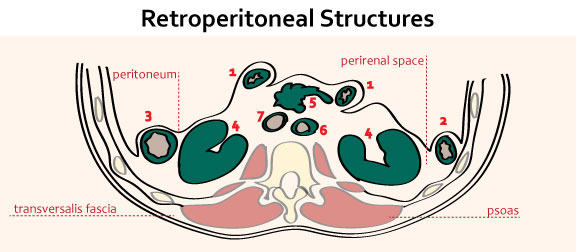
Retroperitoneal Organs : Mnemonic
Retroperitoneal organs are partly covered on one side with parietal peritoneum. They are immobile or fixed. The classification of retroperitoneal organs divides primary and secondary retroperitoneal organs due to the embryonic development – Retroperitoneal structures Mnemonic: SAD PUCKER Primary retroperitoneal structures Mnemonic: SAUKER Secondary retroperitoneal structures Clinical significance Kocher maneuver…
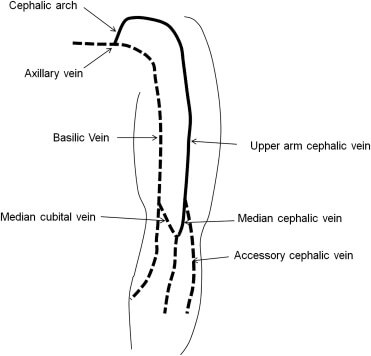
Superficial Veins of Forearm : Mnemonic
Origin: Dorsal venous network The 1st 2 letters of the word “biceps” that being the muscle with which the vein is in relation, will give a mnemonic aid to retain the relative position of the basilic and cephalic veins. (B.I., Basilic Internal) Basilic vein courses medially Cephalic vein course laterally…

Chronic Lead Poisoning : Mnemonic
Mnemonic: ABCDEFGH Anemia: Results from ALA dehydrogenase inhibition Also causes RBC membranes to be permeable to K+ and decrease Na+/K+ ATPase leading to hemolysis Basophilic stippling Burtonian lines: Gum “lead lines” develop in 2-50% Results from subepithelial deposit of lead sulfide granules on gingival margins Colic: Spasmodic pain involving smooth…
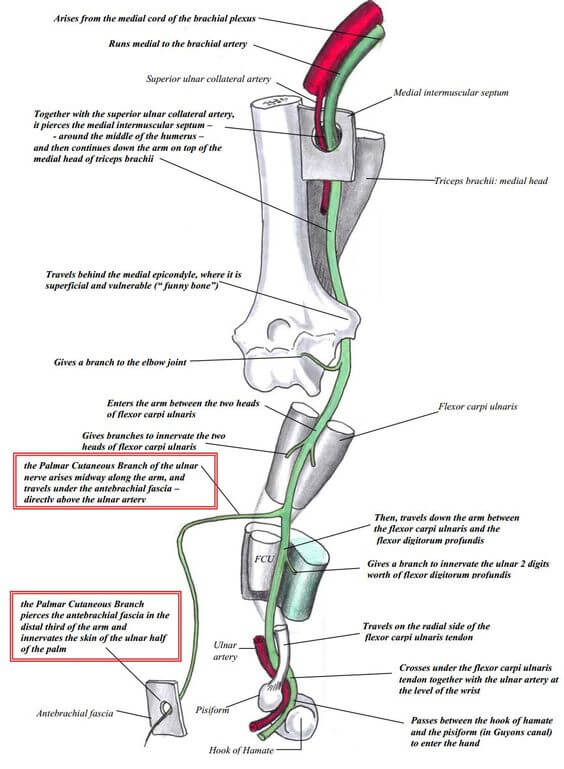
Ulnar nerve Anatomy – Course and Innervation
Origin: C(7), C8, T1 (medial cord of Brachial plexus) Course: Motor innervation: 1. Forearm: Flexor carpi ulnaris (weakness of ulnar deviation and flexion of wrist), Medial half of flexor digitorum profundus (branches near the elbow) 2. Hand: branches near wrist Sensory innervation: Palmar branch at forearm and Digital branch at wrist…
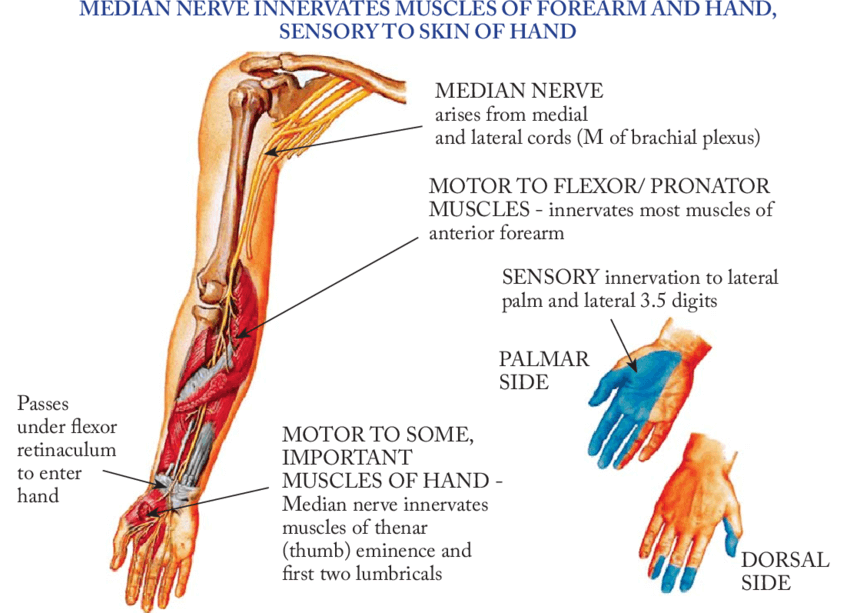
Median nerve Anatomy : Course and Innervation
Origin C5-T1 (lateral and medial cords of Brachial plexus) Course Motor innervation Muscles supplied: 2 lateral lumbricals, 3 thenars, 3Ps (2 pronator and 1 palmaris) and 4 flexors. Sensory innervation Clinical correlation 1. Martin-Gruber motor connection: occur in 17% of individuals between median and ulnar nerves resulting in variable innervations…
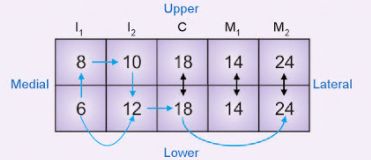
Dental eruption : Mnemonic
Primary teeth begin eruption at around 6 months and Permanent teeth at around 6 years. In general, lower tooth erupts before it’s upper counterpart with few exceptions (lower before upper rule). Age of 6-12 years is a period of mixed dentition (eruption of permanent 1st molar to eruption of 2nd…
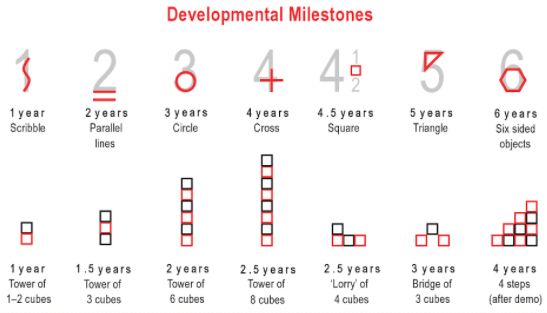
Developmental Milestones : Mnemonic
Principles of development Development proceeds from the head downward (cephalocaudal principle). Development proceeds from the center of the cody outward (proximodistal development). Development depends on maturation and learning. Development proceeds from the simple to the more complex. Growth and development is a sequential and continuous process. Growth and development proceed…
